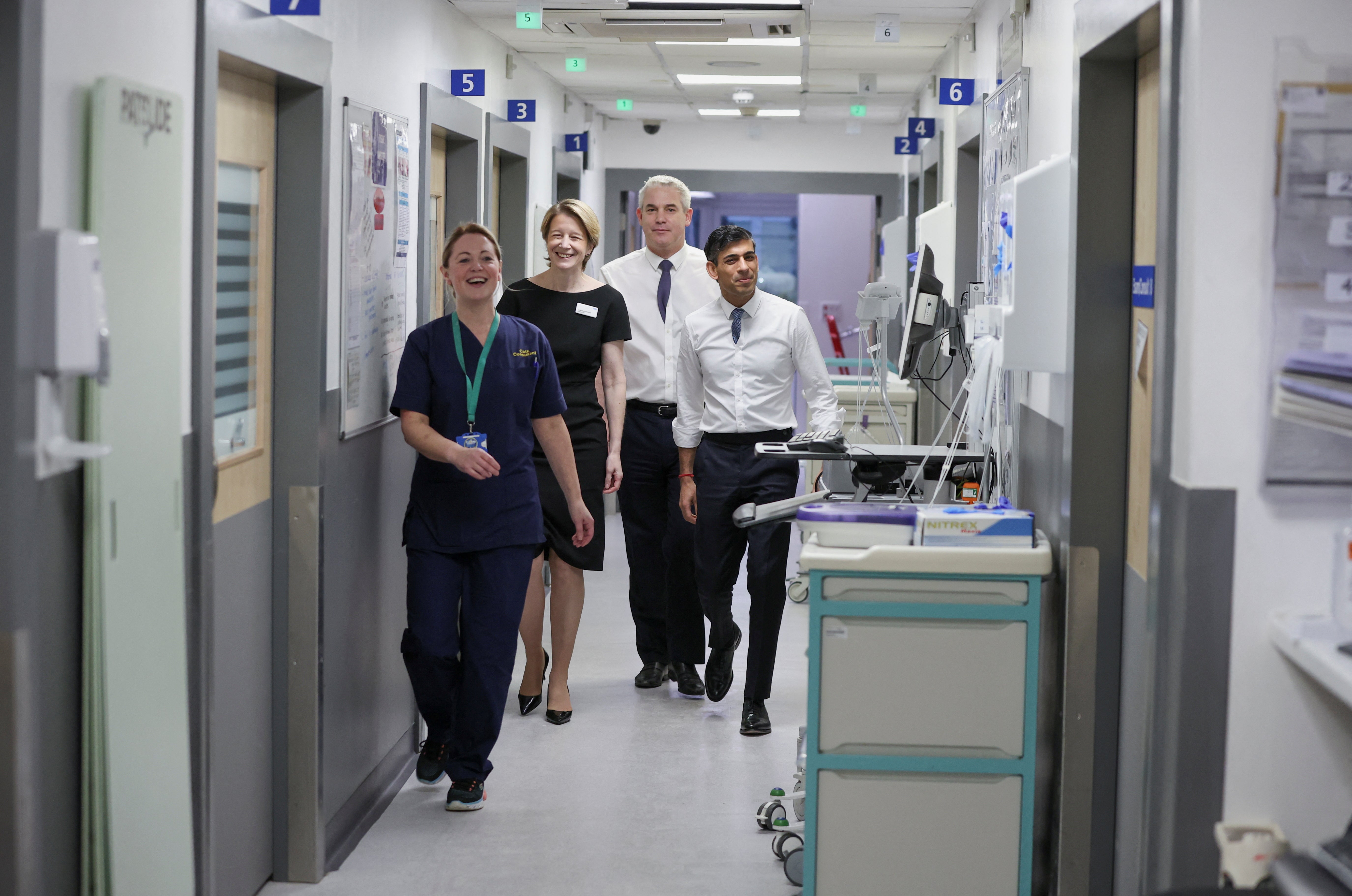Cuts to the NHS waiting list have stalled for second month in a row, new figures show
The number of patients on the NHS waiting list remained the same in March compared to February
Your support helps us to tell the story
From reproductive rights to climate change to Big Tech, The Independent is on the ground when the story is developing. Whether it's investigating the financials of Elon Musk's pro-Trump PAC or producing our latest documentary, 'The A Word', which shines a light on the American women fighting for reproductive rights, we know how important it is to parse out the facts from the messaging.
At such a critical moment in US history, we need reporters on the ground. Your donation allows us to keep sending journalists to speak to both sides of the story.
The Independent is trusted by Americans across the entire political spectrum. And unlike many other quality news outlets, we choose not to lock Americans out of our reporting and analysis with paywalls. We believe quality journalism should be available to everyone, paid for by those who can afford it.
Your support makes all the difference.Hospital waiting lists remained stagnant last month following five months of progress in a further blow to Rishi Sunak’s plan to cut back on delays.
The size of the NHS’ waiting list was also unchanged in March, at 7.54 million, new figures have revealed. The figures relate to 6.29 million patients, the same numbers as in February.
While progress against reducing the NHS waiting list stalled, improvements were seen in cancer waits as the NHS hit targets to see patients within 28 days for the second month in a row.
Prime Minister Rishi Sunak admitted earlier this year the government had failed to meet its promise to reduce the NHS’s waiting list.
The list hit a record high in September 2023 with 7.77 million treatments and 6.50 million patients.
Siva Anandaciva, chief analyst at think tank The King’s Fund, said: As the NHS comes out of a tough winter, it is encouraging to see some green shoots in today’s statistics…some of today’s cancer figures show that the NHS can still improve care for patients despite the challenges it is facing.
“But the road ahead to make further progress in recovering performance in other areas of the NHS, including reducing lengthy waiting times for planned care and A&E, will be long. It has been nearly a decade since A&E performance targets were reliably met, and there is little prospect of performance substantially improving in the near future.

The figures show a significant improvement in the number of people waiting more than 18 months to start treatment in March with 4,770 patients waiting down from 9,969 in February.
There were also 48,968 patients who had been waiting more than 65 weeks to start treatment at the end of March, down from 75,004 in February.
The target to eliminate all waits of over 65 weeks is now September 2024, having previously been March 2024.
However, the number of patients waiting more than 52 weeks to start routine hospital treatment at the end of March was 309,300 up from 305,050 at the end of February.
The government and NHS England have set the ambition of eliminating all waits of more than a year by March 2025.
Meanwhile, progress was made on A&E waits which remained stable with 10 per cent of patients waiting for more than 12 hours in emergency departments to be seen, treated or discharged from arrival. This was the same proportion that waited in February.

Some 74.4 per cent of patients in England were seen within four hours in A&Es last month, up from 74.2 per cent in March and the highest figure since April 2023.
The NHS recovery plan set a target of March this year for 76 per cent of patients attending A&E to be admitted, transferred or discharged within four hours.
NHS England outlined progress against the new target to have 75 per cent of patients diagnosed with cancer within 28 days adn77 per cent of all patients, were seen within this time in March.
NHS National Medical Director, Professor Sir Stephen Powis, said: "Today’s figures show just how hard NHS staff are working to deliver the best possible care for patients, despite ongoing significant demand and a difficult recovery journey - it is particularly encouraging to see we have met the 28 day faster diagnosis target for cancer for the second month in a row, making sure people receive a definitive diagnosis or the all clear within four weeks, which we know is really important for patients.
"Improvements in urgent and emergency care continue, with ambulances responding to emergency calls faster, and more people being seen within four hours in A&Es despite a record April for attendances and admissions.”
Join our commenting forum
Join thought-provoking conversations, follow other Independent readers and see their replies
Comments